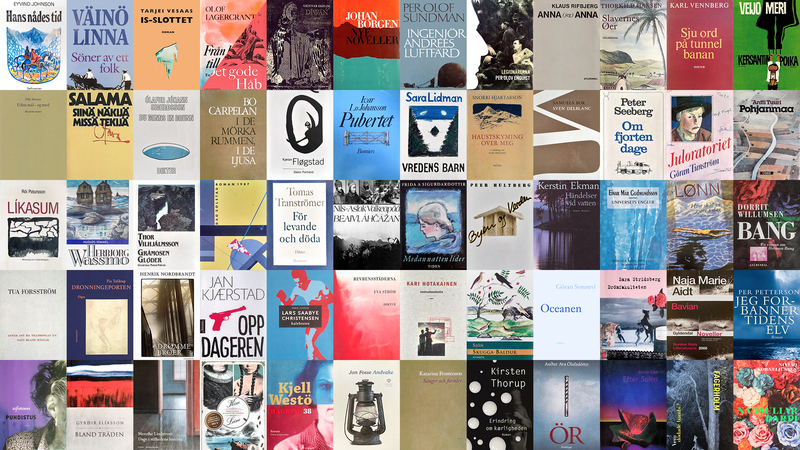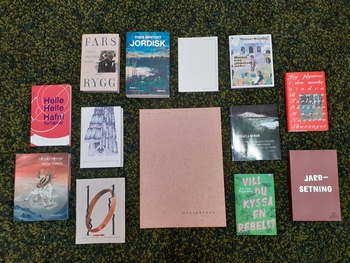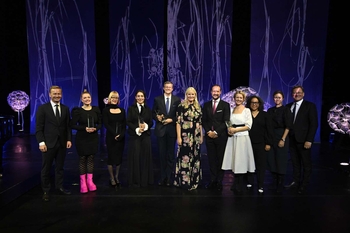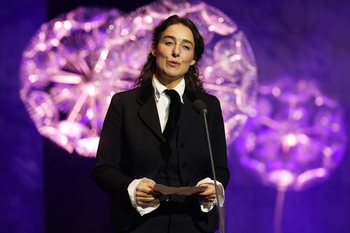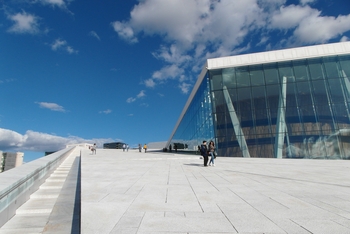10 milestones in the history of the Nordic Council Literature Prize
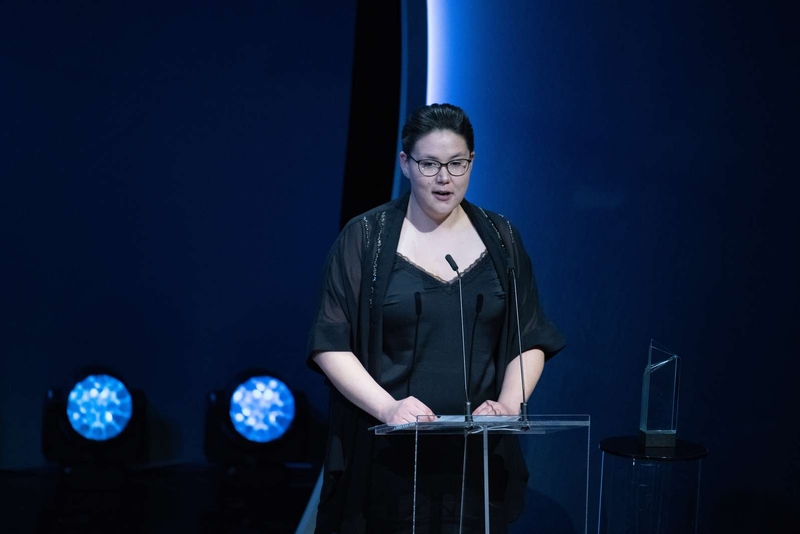
Den grönländska författaren Niviaq Korneliussen har tilldelats Nordiska rådets litteraturpris 2021
Greenlandic author Niviaq Korneliussen, won the 2021 Nordic Council Literature Prize for the novel “Naasuliardarpi”.
1960s
1962:
The Nordic Council Literature Prize was first awarded for Hans nådes tid by Eyvind Johnson. With its ironic style, Hans nådes tid used great historical substance as a mirror for our own time, the jury said.
Johnson’s keen engagement with the burning moral and political problems of the day mean that he maintained a consistent position against dictatorships and the abuse of the individual. He was awarded the Nobel Prize in 1974.
1965:
In 1965, the award was shared by two works (which has not happened since), namely Det gode håb by William Heinesen and Från helvetet till paradiset by Olof Lagercrantz.
The jury wrote, “The Faroese novel ‘Det gode håb’ is set in the 1600s and provides a lush and colourful insight into a period of war in Nordic history as well as a depiction of the universal struggle between justice and oppression. “Från helvetet till paradiset” is a critical study of artistic rank, a modern poet’s interpretation of a classic work, which also conveys a personal message.”
1970s
1974:
Uden mål – og med by Villy Sørensen was the first collection of essays to win the Nordic Council Literature Prize. It diagnoses and discusses a number of difficulties that people face in modern society – the moral and social consequences of modern science and technology, the problem of power and the development or dismantling of political utopias, and questions about the situation of art and philosophy in modernity – all formulated in highly conscious and artistic prose, in the jury’s opinion.
1980s
1980:
When Sara Lidman won with Vredens barn, she was the first female recipient of the award since its inception in 1962. At the time, several women had been nominated for the prize, including Inger Christensen.
In its rationale, the jury wrote: “Here, Sara Lidman evokes the life and human experiences of an entire settlement with love, tenderness, cheerful irony, and an inexhaustible joy of fabulation, which gives the story a mythical dimension.”
1987:
Hudløs himmel by Herbjørg Wassmo was the third instalment in a trilogy (after “Huset med den blinde glasveranda” and “Det stumme rum”).
The jury wrote: “Hudløs himmel” is the third in a series of novels about the exploited German kid Tora, who finds the strength to live on through others. The novel is an unusually nuanced portrayal of a young woman, sensitively written but also with a dramatic realism.”
1990s
1995:
Englar alheimsins by Einar Már Gudmundson gave voice to the mentally vulnerable through the schizophrenic Páll who, throughout his life, suffers from split personality, mood swings, and anxiety. The novel is set in Reykjavik, a growing city undergoing transformation.
The jury wrote: “Civilisation and the world are experienced in a psychiatric patient’s mind with poetic madness. The humour gives emphasis to its gravity. Its irony is clad in a veil of naivety. The novel allows insight into a reality that we have become accustomed to calling normal.”
1998:
Efter att ha tillbringat en natt bland hästar is by Tua Forsström, the first female Finnish-Swedish poet to win the prize. Nature and animals, including horses, are important elements in Forsström’s literary work. The animals represent the freedom to be and feel, and they also reflect the fragility of life. This poetry collection moves across the globe and expresses the impermanence of everything and the omnipresence of human loneliness.
The jury wrote: “The 1998 Nordic Council Literature Prize is awarded to the Finnish writer Tua Forsström for ‘Efter att ha tillbringat en natt bland hästar’, a multifaceted collection with elements of humour and sadness. It has a consistent theme, it is musical, and it is strongly anchored in the here and now.”
2000s
2007:
Drömfakulteten. When Sara Stridsberg won the prize in 2007, she was the youngest recipient in its history to date. The jury wrote: “‘Drömfakulteten’ is a passionate novel of great depth. The narrative revolves around ultra-feminist icon Valeri Solanas and her frequently tragic life story. Stridsberg mixes documentary material and free fiction in a feverishly vibrant prose. The novel, subtitled ‘postscript to the sexual theory’, is a blistering showdown with the various repressive mechanisms that society employs. Despite the seriousness of the subject, ‘Drömfakulteten’ is borne along by tremendous energy and linguistic lust.”
2010s
2019:
Efter Solen. When Jonas Eika (born 1991) received the award, he became its youngest-ever recipient. The jury wrote: “Jonas Eika wins the prize for a work in which you truly feel the global crisis. Exploitation and inequality, desperate conditions and violent, dark experiences are an important part of its fabric (...). Reality opens itself up to other possibilities, other dimensions. There is something wonderful and hopeful in how it reminds us that literature can do more than just mirror what we already know.”
2020s
2021:
Naasuliardarpi. When Niviaq Korneliussen won with Naasuliardarpi, Skuespillerhuset in Copenhagen erupted. She was the first Greenlander ever to win the prize. “Naasuliardarpi” is a milestone in Greenlandic literature that offers intense yet tender insight into the lives of Greenlanders today and the traumas that still cut deep in day-to-day life.
